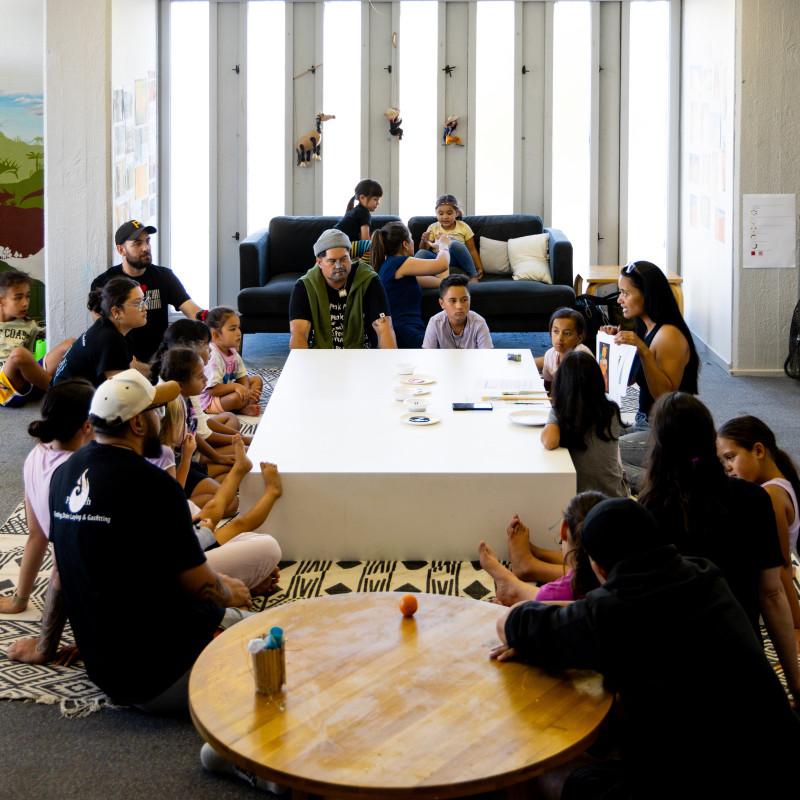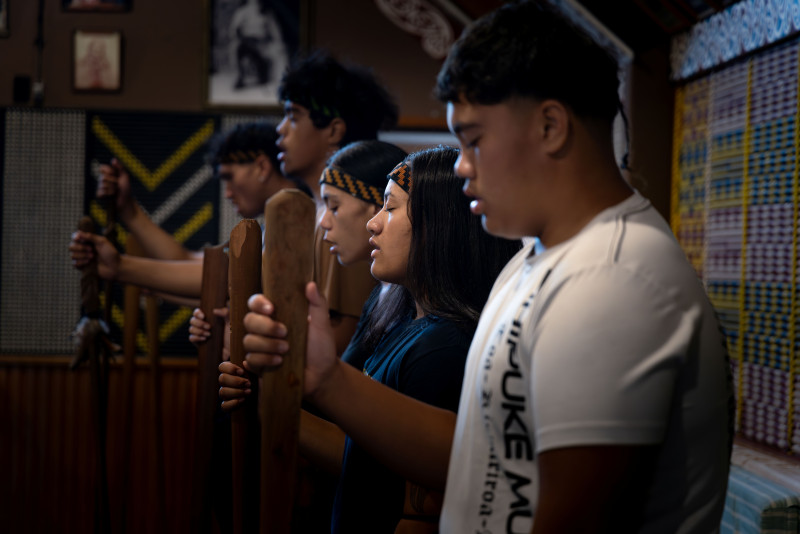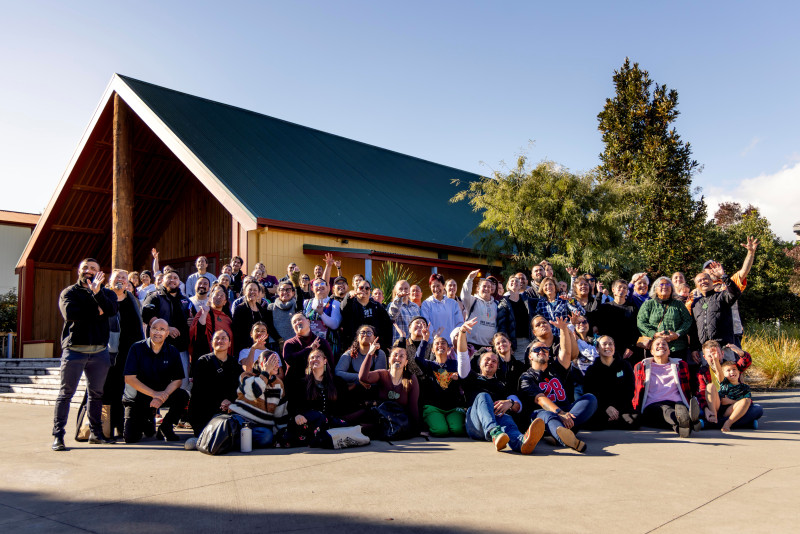Three stories of reo Māori reclamation celebrated for Te Wiki 50th
Media release

Three inspiring communities are championing language reclamation in ways that are unique to who they are and where they are from.
Kaharau and Anaru Keogh of Te Reo Mau-ri, Karangawai Marsh and Tania Te Tau of RaRau Mai, and Kiharoa Milroy of Te Kura Reo o Ngāti Whakaue feature in a Te Mātāwai campaign, Takahia tō Ara, showcasing pathways to learn te reo Māori.
The campaign takes us around the North Island — from a wānanga mau rākau for rangatahi in Hamilton, to reo Māori art classes for whānau in Palmerston North, to a kura reo for the iwi of Rotorua.
Te Mātāwai Acting CE, Karl Smith says that it is exciting for Aotearoa to be celebrating the 50th anniversary of Te Wiki o Te Reo Māori, and Te Mātāwai is proud to highlight the community-based initiatives we support.
“Our communities are the beating heart of reo revitalisation. It’s important to us that we showcase the people that make these kaupapa happen through our Takahia tō Ara campaign,” he says.
Although the initiatives show different reo acquisition journeys, their goals are one in the same: ensuring intergenerational transmission and building connected Māori language communities.
RaRau Mai is for whānau who are committed to using te reo Māori at home and want to expand their reo use by creating art together.
Co-founder of RaRau Mai, Tania Te Tau, speaks of its origins “RaRau Mai has really come out of that need from our community, that we want spaces to go to be immersed in te reo Māori.”

In Waikato, rangatahi are spending less time online and more time in-line learning mau rākau (traditional weaponry), deepening their connection with Māori customs, language and the environment.
Pouako, Kaharau shares, “Ko Te Reo Mau-ri tēnei. He huarahi e ohomauri ai tō reo, e ohomauri ai te ngākau, ki te hāpai i te rākau ki te oranga o te tinana me te oranga o te hinengaro.”
“This wānanga encourages rangatahi to prioritise not only the resurgence of te reo Māori, but the health of the mind and body.”
Nestled among the geysers, hot springs and mud pools, Ngāti Whakaue of Rotorua are building the reo capability of whānau, one kura reo at a time.
“Ko te mahi nui a te hapori me ngā whānau Māori, he ako i te reo Māori me te whāngai i roto i ngā kāinga. Ka māori noa te reo Māori ki ngā tamariki, nā, ka māori noa te reo Māori i a rātou e hikoi ana i ā rātou ara,” says kaiwhakahaere, Kiharoa.

“The biggest job for the community and whānau Māori is to learn te reo Māori and speak it in the home. When te reo Māori is normalised to our tamariki, it becomes a natural part of them as they navigate through life.”
-ENDS-
